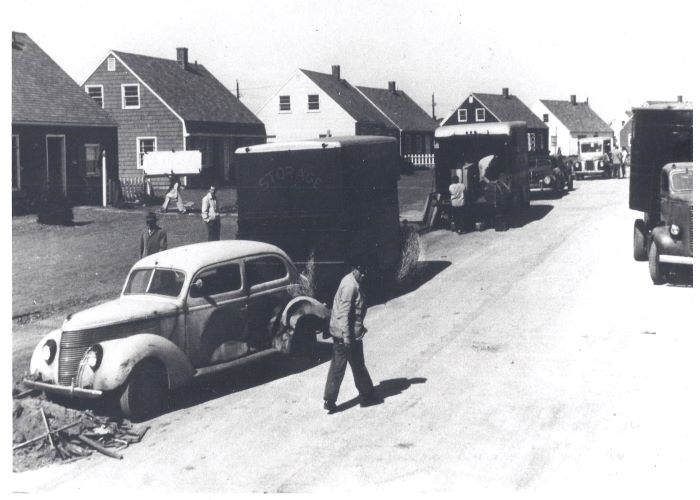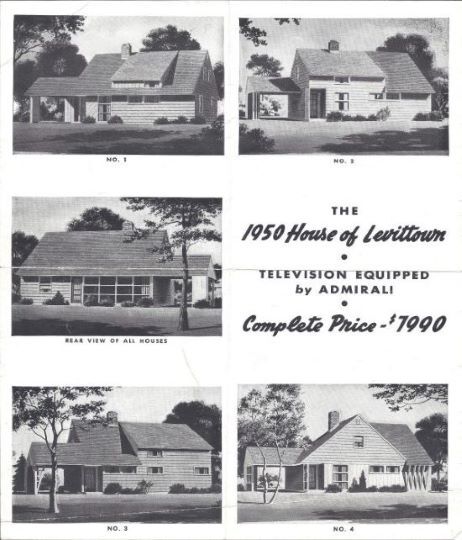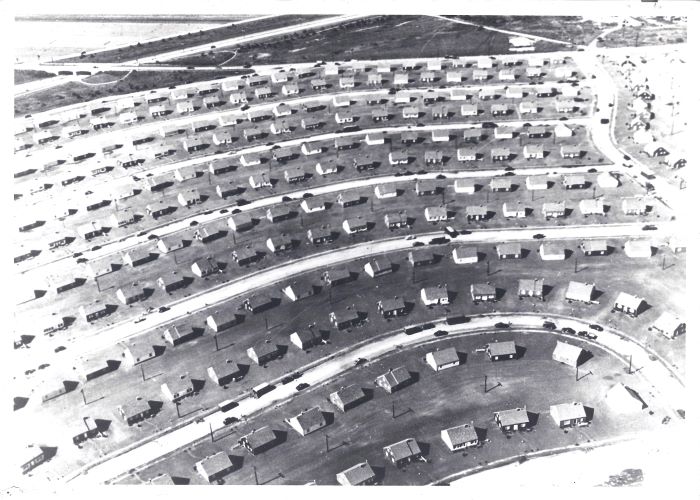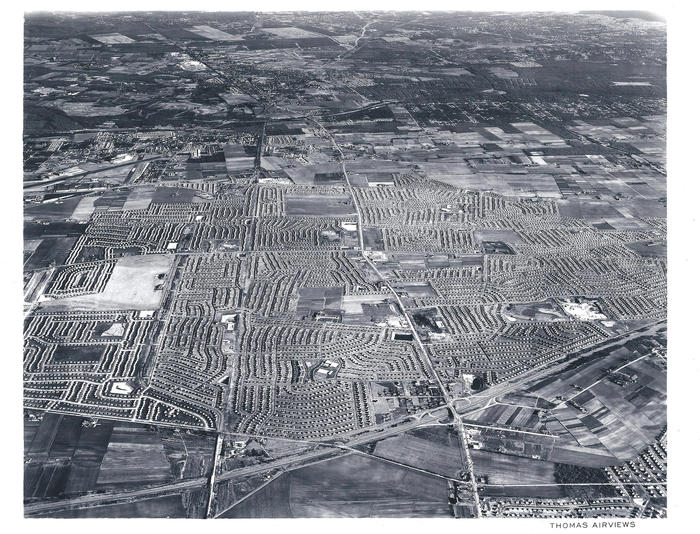The idea of a safe middle-income suburb has become an increasingly politicized topic in America. In a recent incendiary Tweet, President Trump announced the rollback of an Obama-era program intended to combat racial segregation in suburban housing. The program expanded provisions set down in the Fair Housing Act of 1968. Recent headlines surrounding this topic bring to light part of America’s suburban history hidden behind the idyllic images of white picket fences and rolling green lawns. To better understand the roots of today’s debate, we can look to the history of Levittown, Long Island, America’s first suburb.
Levittown in Nassau County is a rather quaint hamlet that was planned and constructed from 1947 to 1951. Named after the firm Levitt & Sons, Inc. founded by Abraham Levitt, the settlement was built for returning World War II veterans and is today considered one of the first mass-produced suburbs in the country. Levittown brought about a new post-war culture emphasizing conformity and uniformity, with many women returning from their manufacturing jobs during the war to a more traditional motherly role. Many of the original 1950s homes still remain, as well as its original nine community swimming pools, remnants of seven shopping strips, and active VFW and American Legion posts.
 Early Families Moving Into Capes / Courtesy of the Levittown Public Library
Early Families Moving Into Capes / Courtesy of the Levittown Public Library
Abraham Levitt and his two sons, William and Alfred, built four communities called “Levittowns” in New York, New Jersey, Pennsylvania, and Puerto Rico. The Levitt firm had earlier built custom homes for upper-middle-class communities across Long Island, yet following the war, the Levitts decided to switch to mass-produced houses that could be quickly constructed; over thirty of these one-floor homes with “expansion attics” could be constructed in a day, and each home could be built in about 26 steps. Workers were paid very well for their labor, but the Levitts’ decision to not use union contractors for the construction led to picket lines. Every finished home was equipped with televisions and modern kitchens. Homes cost around $8,000 at the end of the 1940s, and the G.I. Bill reduced this cost to only $400, or about $4,500 today. The median price of a Levitt home in today’s market is $400,000.
Levittown, Long Island originally planned to feature 2,000 of these mass-produced homes. About half the properties were rented within just two days of the community’s 1947 announcement. An additional 4,000 homes in Levittown, which before the Levitts was rather undeveloped, were added to construction plans. As thousands of people began buying these inexpensive homes, the community changed its name from Island Trees to Levittown in 1948. By 1951, Levittown and the surrounding area included over 17,000 Levitt-designed homes, including the much newer “ranch house” design.
 1950 Ranch Models / Courtesy of Levittown Public Library
1950 Ranch Models / Courtesy of Levittown Public Library
At the time, the community seemed utopian, as people who were willing to sacrifice their lives for their country could live peacefully without financial burden. Yet, Levittown had a number of caveats that prevented certain demographics from even buying homes in the area. A clause in the original Levittown covenant prevented tenants from allowing non-Caucasians to use or occupy Levitt houses. The 1926 court case Corrigan v. Buckley ruled that racially restrictive covenants were legally binding documents that could prevent the selling of houses to Blacks. Even areas like Stuyvesant Town, Parkchester, and Addisleigh Park only accepted whites at first. In Levittown, Black veterans were unable to purchase homes, and the Levitts justified the clause by stating that it maintained the value of the properties, since most whites at the time preferred not to live in mixed communities.
 Early Capes Aerial View / Courtesy of Levittown Public Library
Early Capes Aerial View / Courtesy of Levittown Public Library
Shortly after opening, the Committee to End Discrimination in Levittown protested the restricted sale of Levittown homes. In 1948, Shelley v. Kraemer struck down these racially restrictive housing covenants, as they violated the 14th Amendment, and the Levittown clause was eliminated. Even with this ruling, the area remained overwhelmingly segregated until 1954 after the Brown v. Board of Education cases. Levittown today has a rather different demographic makeup, yet Black residents in the middle-class area still only constitute a shockingly small minority.
“According to 2017 census estimates, the population of nearly 52,000 is 14.6 percent Hispanic or Latino and 7.3 percent Asian, an increase of 7.8 and 4.5 percent since 2000,” writes the New York Times. “In that same period, the percentage of black or African-American residents rose from 0.5 percent to 1.4 percent.”
 Levittown Wide Aerial Long Island / Courtesy of Levittown Public Library
Levittown Wide Aerial Long Island / Courtesy of Levittown Public Library
Levittown became a symbol of post-war suburbia with its mass-produced homes, emphasis on conformity, and a return to traditional gender roles. The settlement’s name now colloquially means a suburb with largely identical homes, with areas like Bayville and Dunewood on Long Island nicknamed “Levittown on the Sound” and “Levittown on the Bay” respectively. The Levittown homes also inspired the creation of a planned community in Willingboro Township, New Jersey, which unlike Levittown, Long Island actually became a majority African-American neighborhood. These Levittown communities throughout the United States reveal both the attempts at housing reform and recovery from World War II while also highlighting the practices which contribute to our country’s systematic racism.
Next, check out Queens’ Addisleigh Park, the “African-American Gold Coast of NY”!






